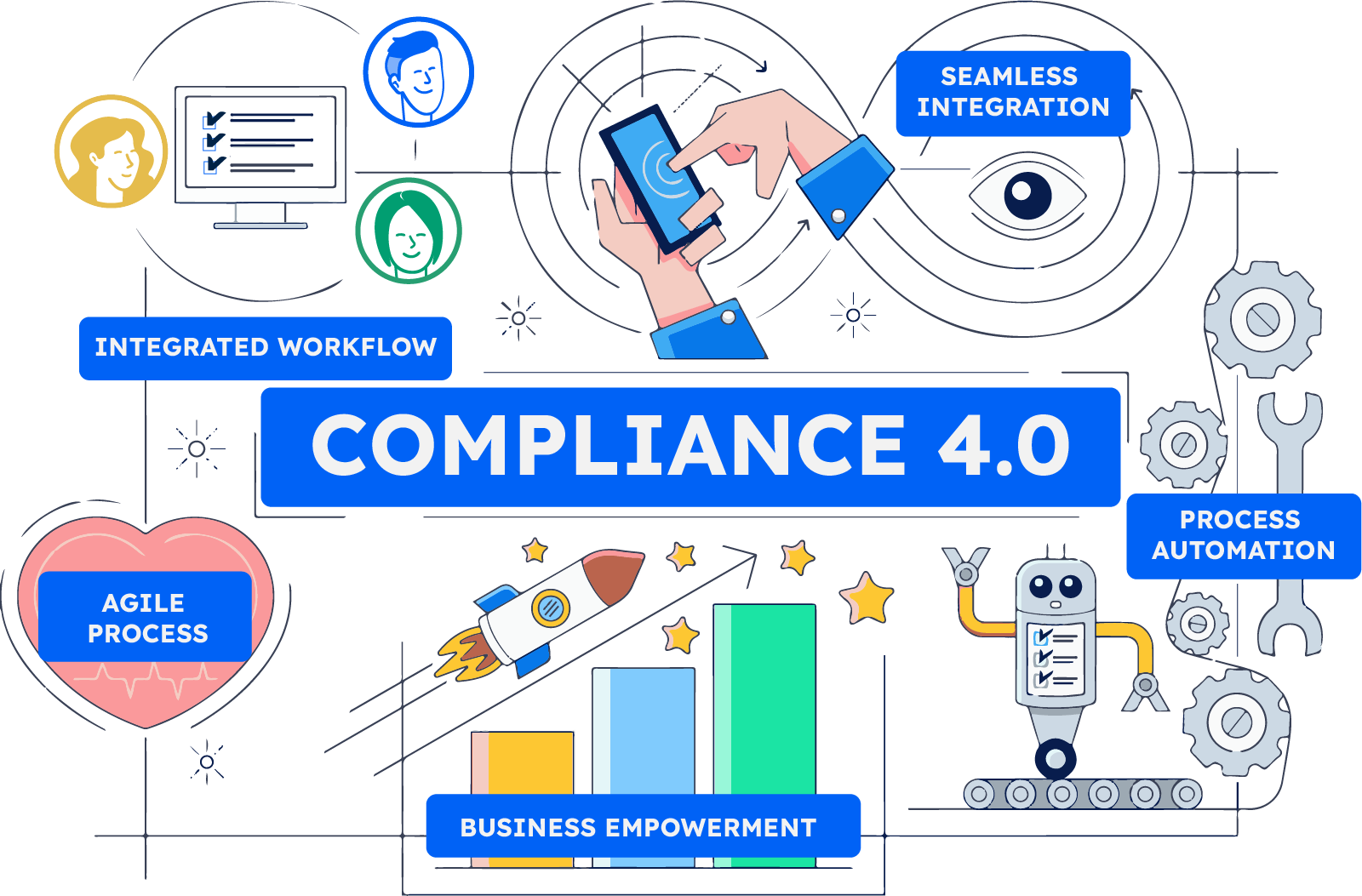
Compliance: n. obeying a particular law or rule, or of acting according to an agreement.
The term Compliance, means different things to different people. Some shudder at hearing the term after painful past interactions with compliance teams and requirements. Others feel a sense of structure, clarity and certainty.
For the purposes of this post, we use the term compliance to describe any acts to follow an established approach, standard or regulation to meet the business requirements. That's really what SOC 2 is about, along with many other good business practices that require the organisation as a whole, to "comply" with defined policies, processes and methods that are established to achieve the objectives. Some are optional, some are mandated, with varying degrees of enforcement.
Whatever compliance means to you, let's explore what's in store for Compliance in Industry 4.0.
The State of Play in Compliance
Compliance requirements are rapidly growing. Privacy, security, contingency planning, outsourcing and risk management, have gone from good practices, to regulatory requirements. Expectations from regulators, customers and the public, have increased off the charts.
The last few years have taught us that compliance teams are up against it. Companies are struggling to meet basic requirements, that from the outside appear so simple to achieve. The fail points in compliance come from the sheer scale, complexity and the separation between compliance experts and the areas and people required to comply. There's a lack of cohesion when it comes to regulations and compliance, with different countries and even states having their own requirements.
-
How can compliance teams manage this complexity and far reaching requirements?
-
What does that look like in the future of compliance?
1. AGILE PROCESSES
The big shift of the last decade was moving to agile product and technology development. This has more recently moved to agile business processes. An agile approach and mindset is being more broadly adopted across the spectrum of business activities. In most cases, it improves business performance and process effectiveness. But it also presents new challenges to compliance teams that need to influence those processes to effectively achieve compliance outcomes.
2. BUSINESS EMPOWERMENT
Compliance teams can’t own compliance outcomes on their own. The business functions need to take responsibility for compliance within their area and lean on compliance teams for advice or support as needed. The main barrier to this in practice is that compliance teams can't be involved in everything. Others need the knowledge, awareness and effective process designs to trigger when to engage compliance.
3. SEAMLESS COMPLIANCE INTERACTIONS
Compliance professionals need to minimise the friction for business teams dealing with “compliance”. It’s one thing to scare business users into being compliant, but it’s all too easy for them to turn the blind eye or otherwise find ways to avoid it. The onus is on compliance teams to prove compliance can be achieved without unnecessary impacts or time wasting of the business.
4. INTEGRATED WORKFLOWS/PROCESSES
The way to enable agile processes, while empowering the business and ensuring interactions with compliance is seamless, is through integrated workflows. Integrated workflows ensure compliance teams are engaged effectively, consistently, and at the right point in each process. This minimises their time and level on input required, while helping to guide teams to get the right outcomes.
5. AUTOMATION
Automation presents new challenges but also opportunities for the compliance efforts. Automating business processes can achieve compliance by design, which takes out a lot of the ad-hoc, manual and detailed individual compliance assessments needed. You can automate the roles and requirements of compliance functions to empower your compliance teams to focus on monitoring of the business activities, the big picture of compliance risks and issues, and the evolving landscape of requirements.
In sixty seconds, we'll show you how you can automate your compliance workflows for Compliance 4.0, in this example of International Data Compliance automation.






